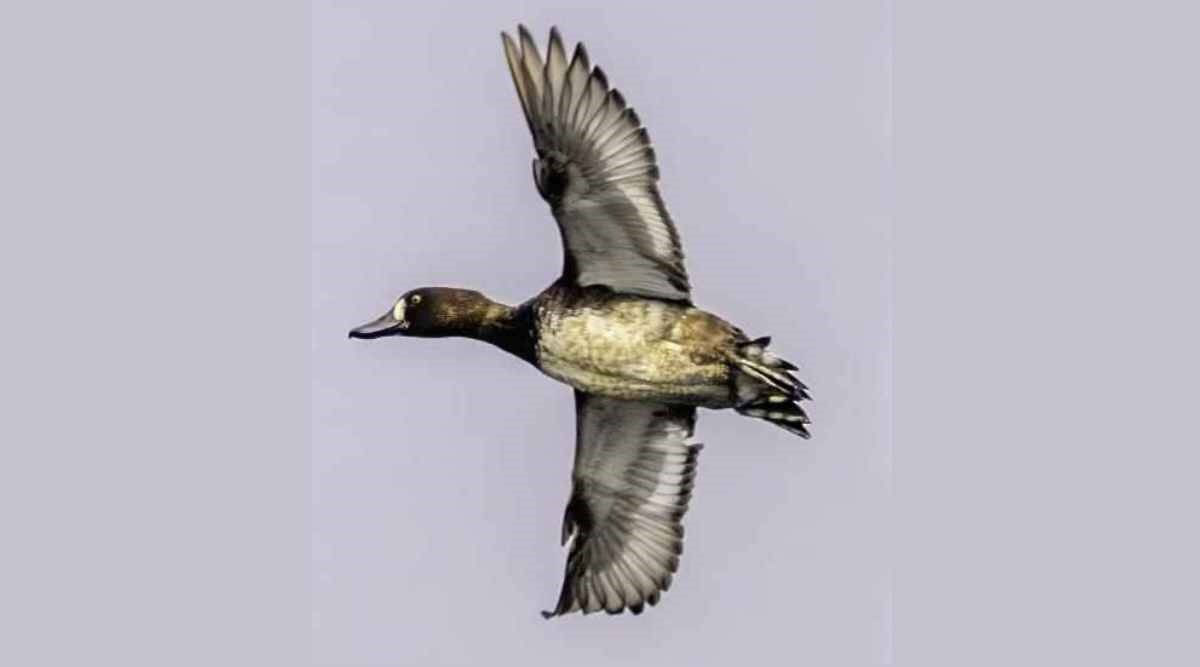Description

Disclaimer: Copyright infringement not intended.
Context: A rare species of duck, Greater Scaup, locally known as Sadangman, was recently sighted in Loktak lake in Manipur’s Bishnupur district after a gap of over 90 years.
Details:
- The greater scaup (Aythya marila) is a medium sized diving duck belonging to the family Anatidae.
- The greater scaup species is distributed in Asia, Europe, United States and Canada.
- It is a rare visitor to the Indian Subcontinent.
Taxonomy of the Greater scaup:
- Scientific Name: Aythya marila
- Common Name: Greater scaup
- Family: Anatidae › Anseriformes › Aves › Chordata › Animalia
.jpeg)
Description:
- The greater scaup is a medium sized bird and the male scaup is slightly larger than the female.
- The male bird has a bluish bill and pale yellow eyes.
- The head of male greater scaup is rounded and black with a dark green sheen.
- The female had a brown head and body.
Habitat:
The breeding scaup inhabit shallow, freshwater lakes, pools and rivers with grassy shorelines. The wintering birds are observed on shallow coastal waters, sheltered bays, brackish lagoons, estuaries, inland lakes and reservoirs.
Feeding habits:
The greater scaup species are omnivorous and feed on aquatic plants, seeds, leaves, weeds, crustaceans, aquatic insects, molluscs and other invertebrates.

Breeding:
- The breeding season is during May and June.
- The scaup are monogamous. The nest is built on the ground hidden in vegetation.
- The female lays six to nine olive-buff-colored eggs and incubates them.
Movement Patterns:
- The greater scaup species are highly migratory, breeding near arctic regions and migrating to warmer south from August onwards.
- The return spring migration generally begins in February.
Status and conservation:
- The global population of greater scaup species is estimated to be 1,200,000 to 1,400,000 individual birds.
- These scaup species have large range and population and have minimal conservation concern.
- Legal hunting, habitat loss and fishing activities are the major threats in conservation. These species are susceptible to avian influenza.
- The IUCN (International Union for Conservation of Nature) has categorized and evaluated these scaup species and has listed them as of "Least Concern".

https://indianexpress.com/article/north-east-india/manipur/manipur-rare-species-duck-sighted-loktak-lake-years-8388058/















